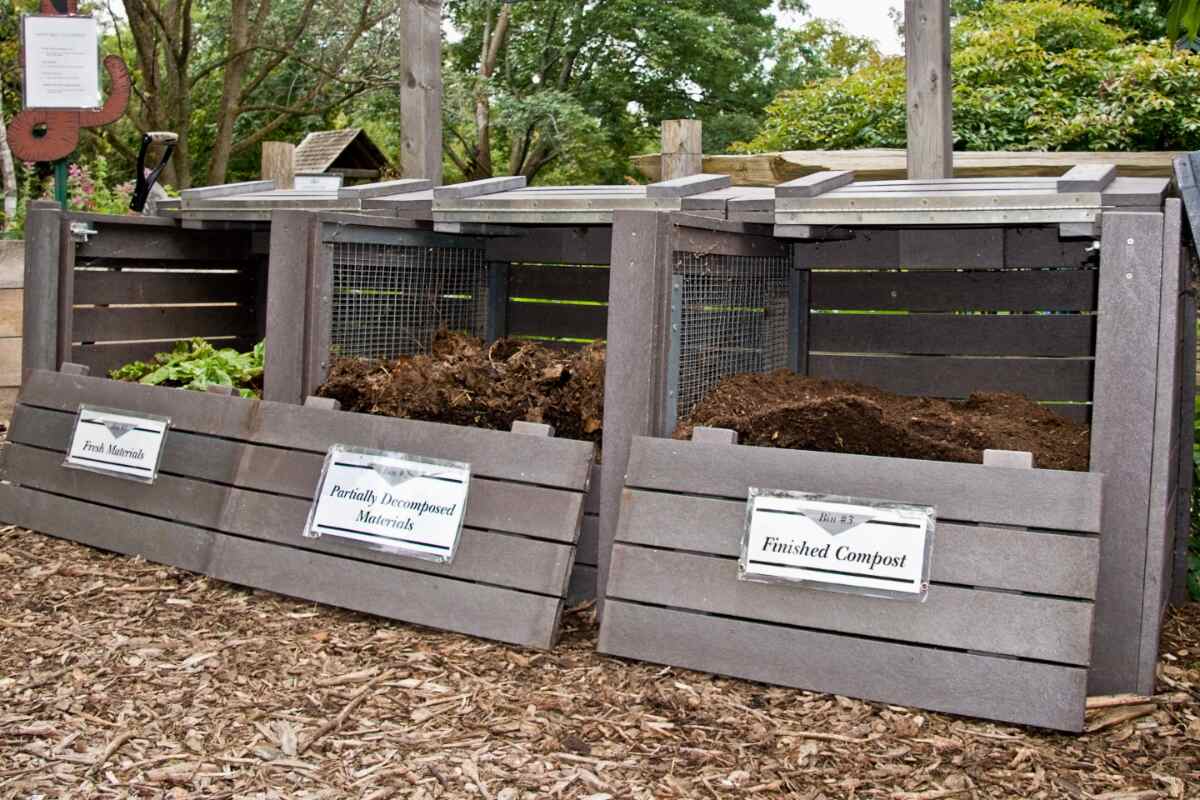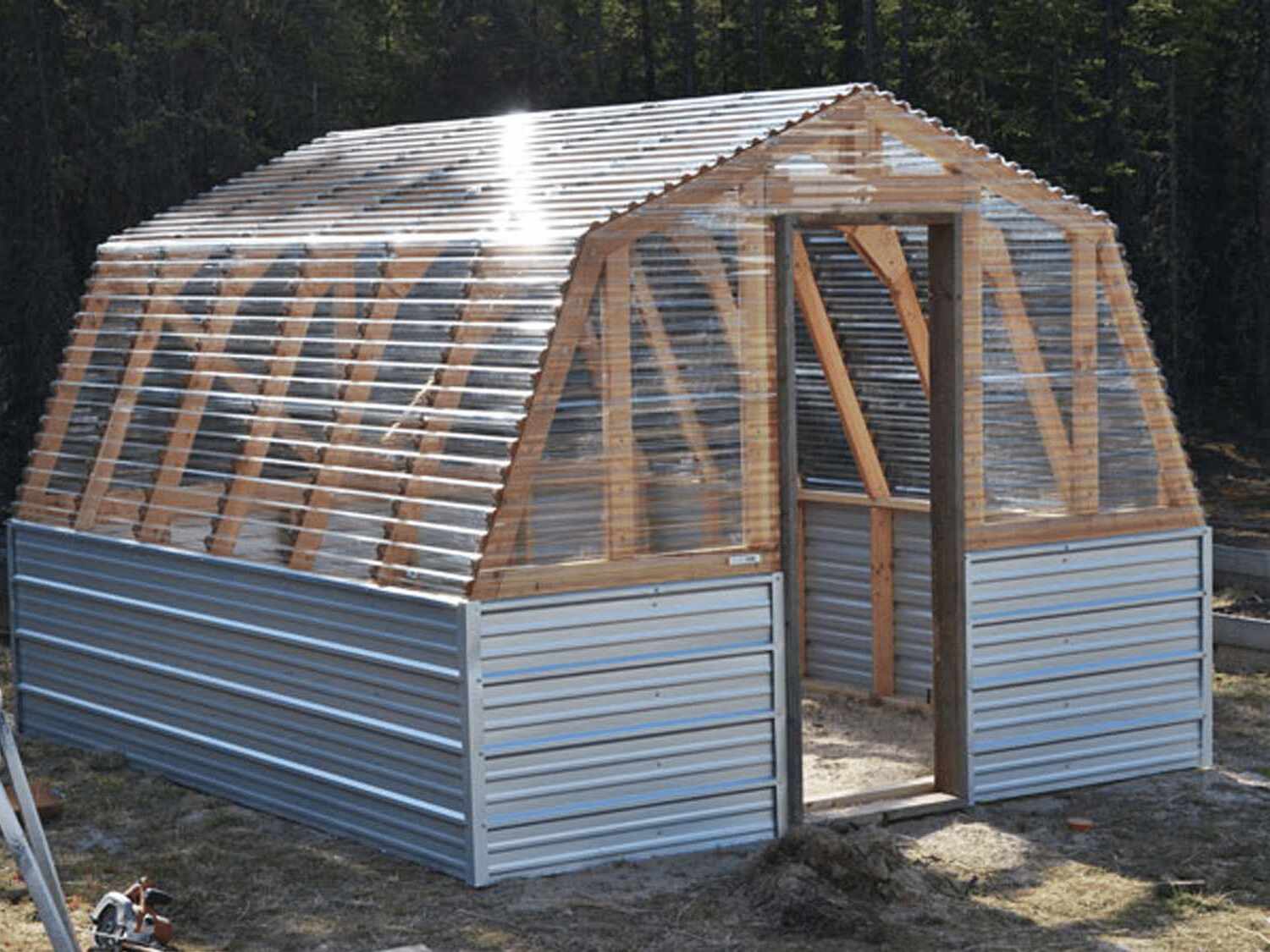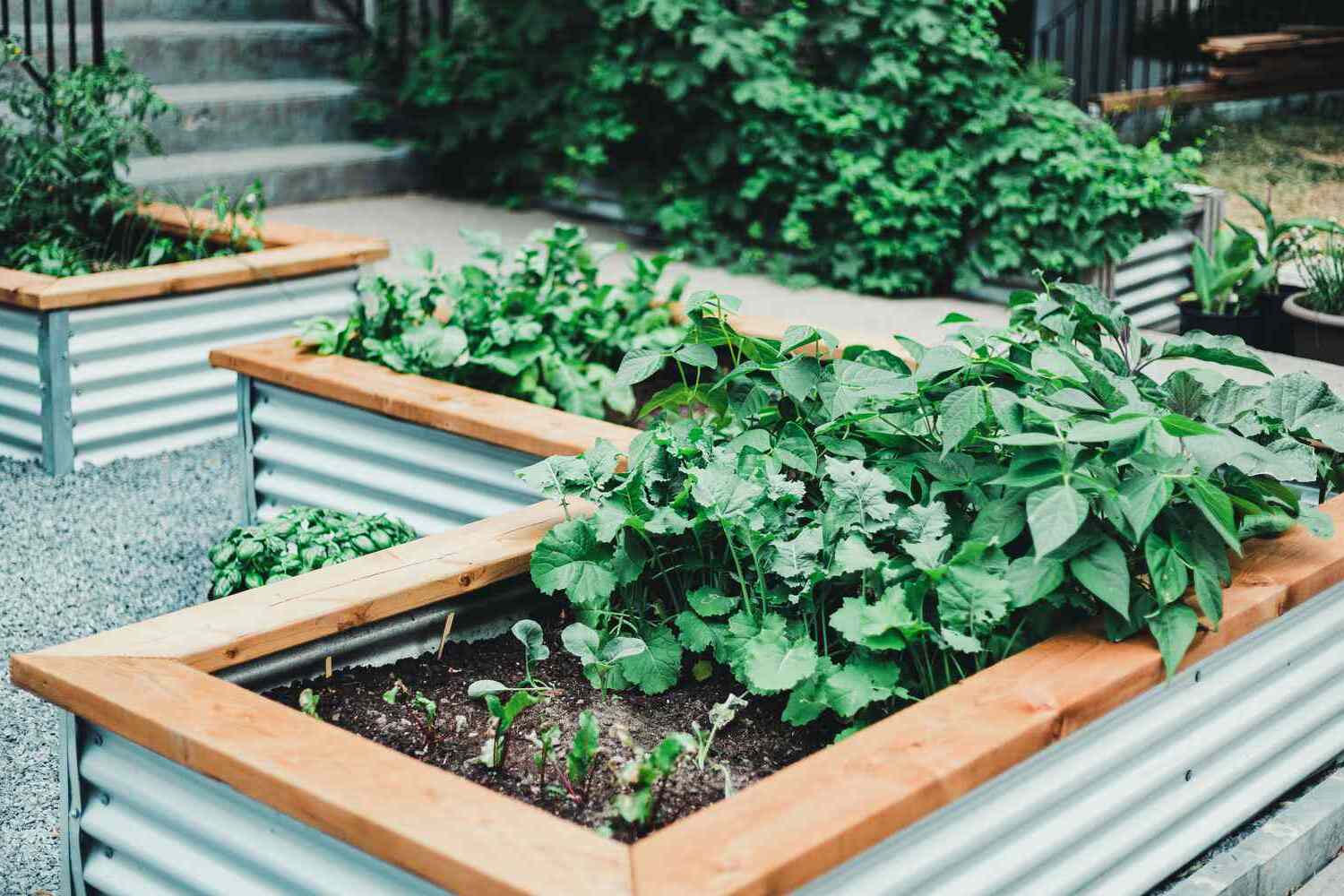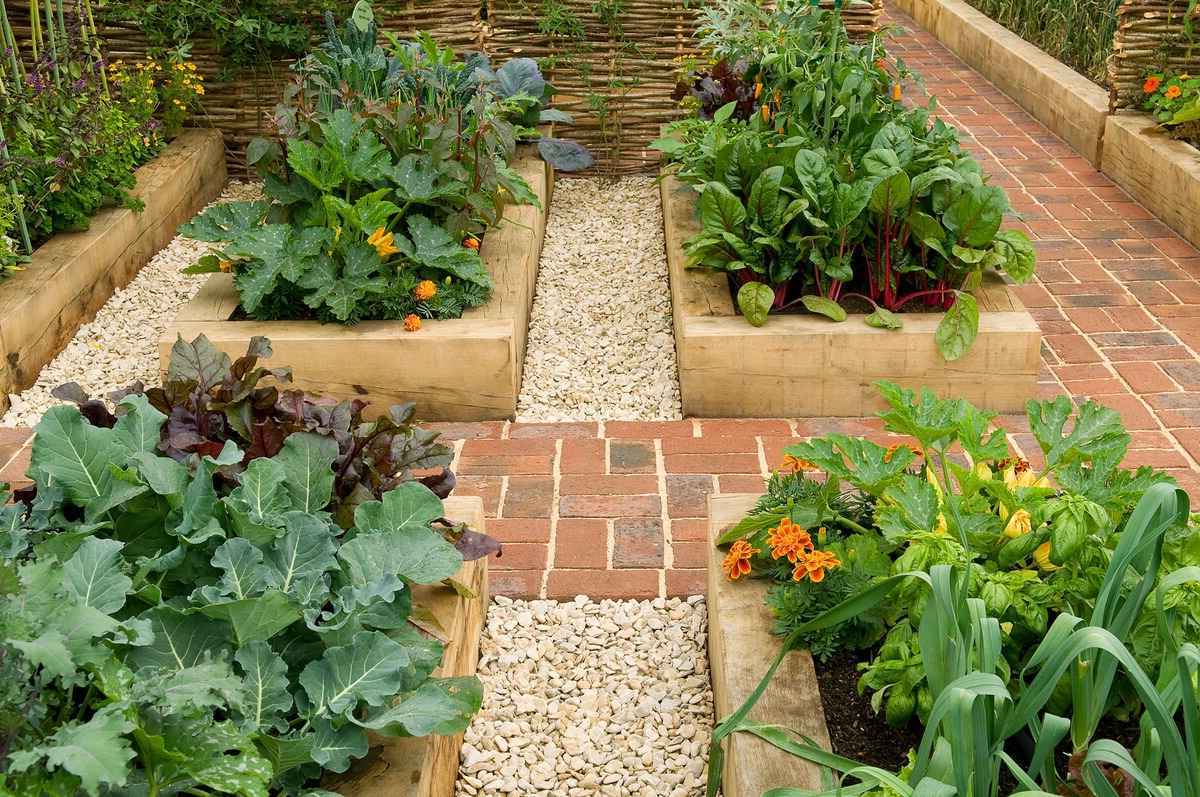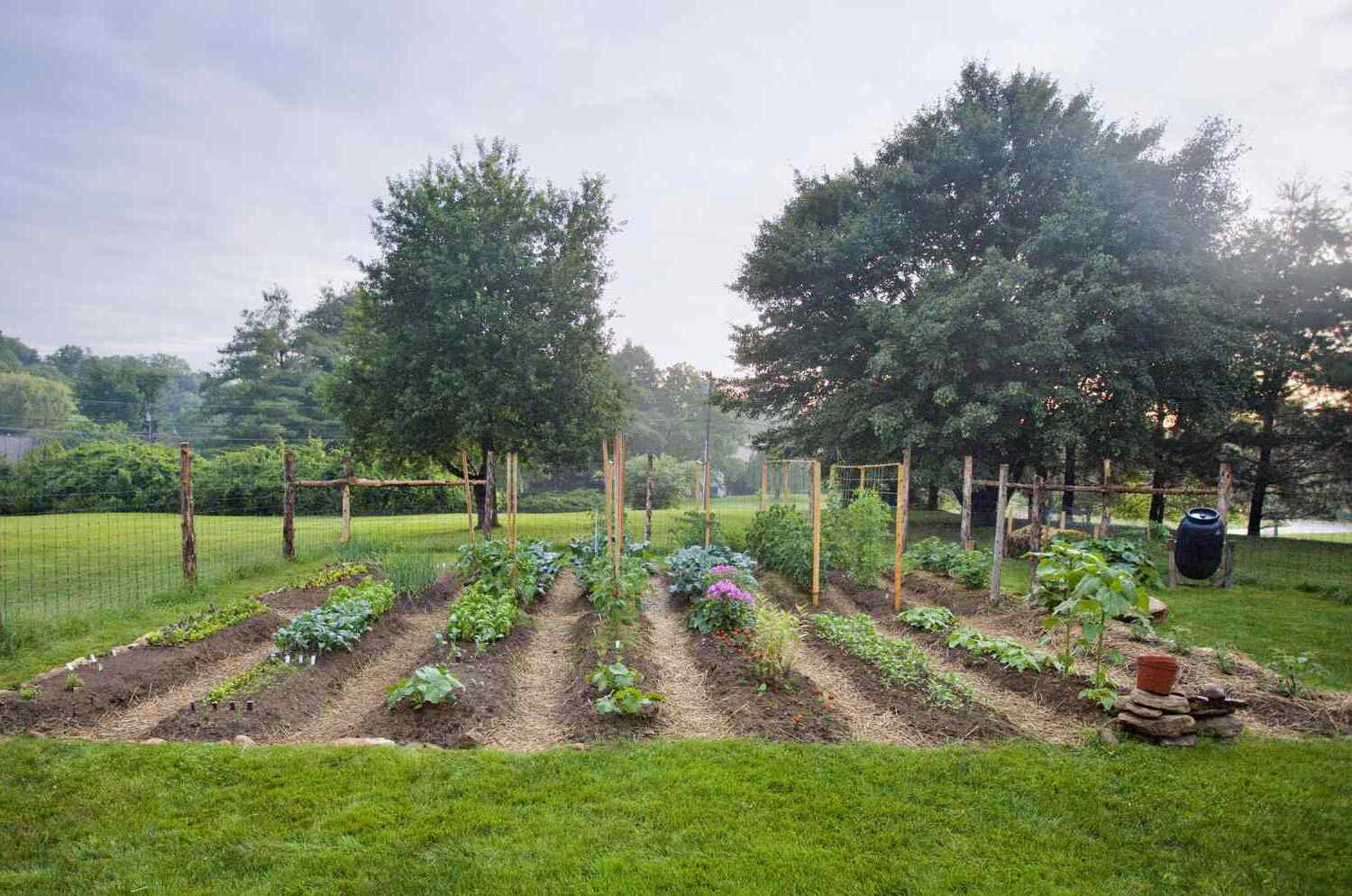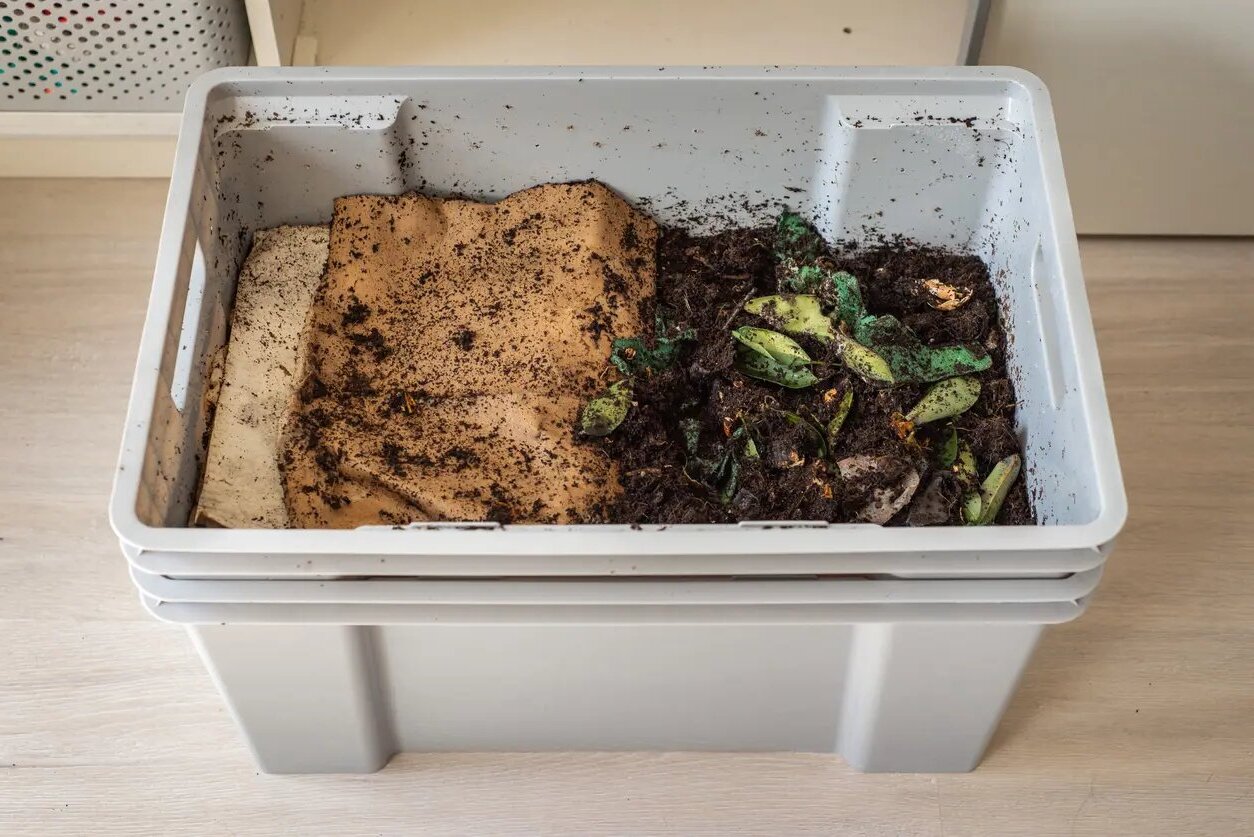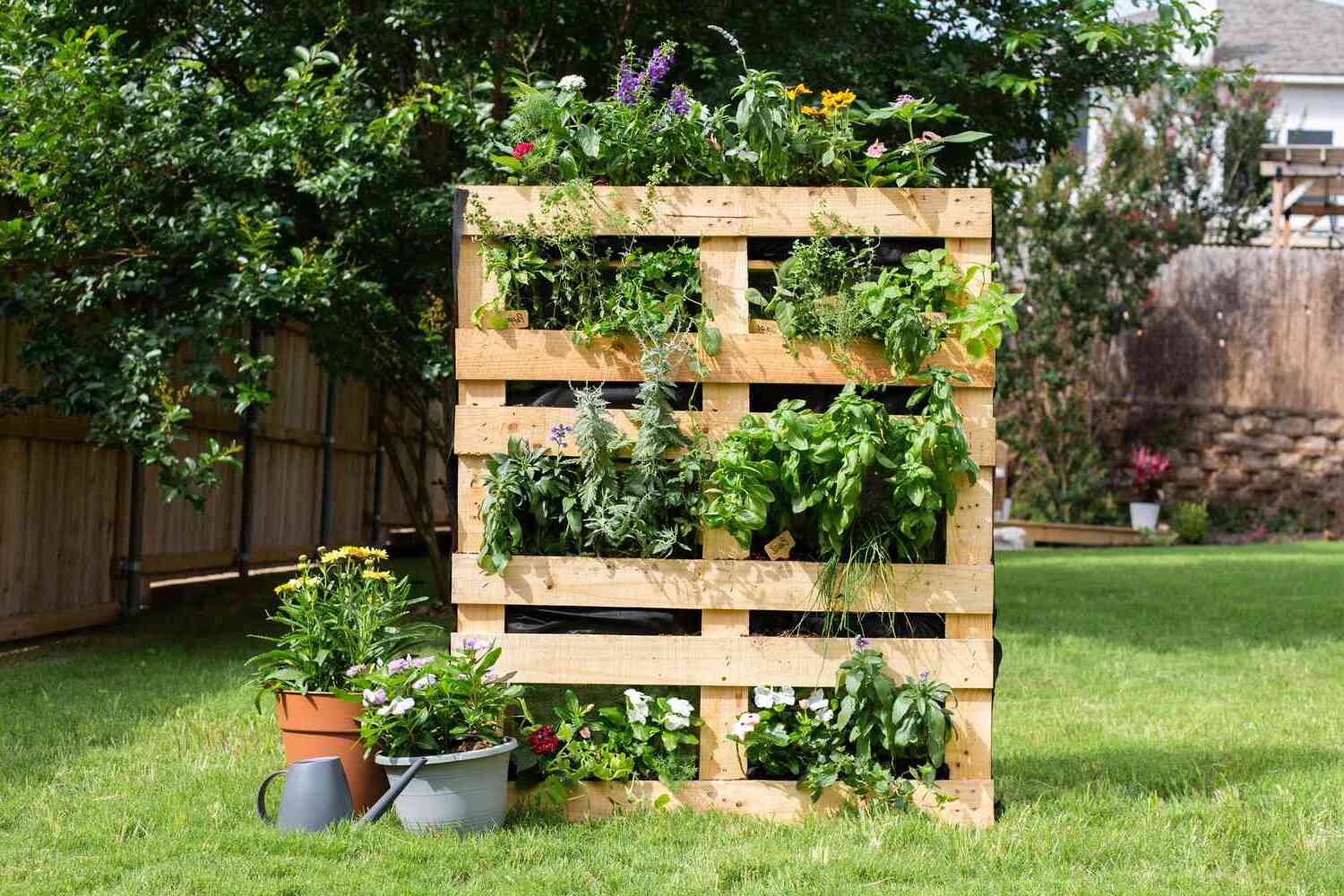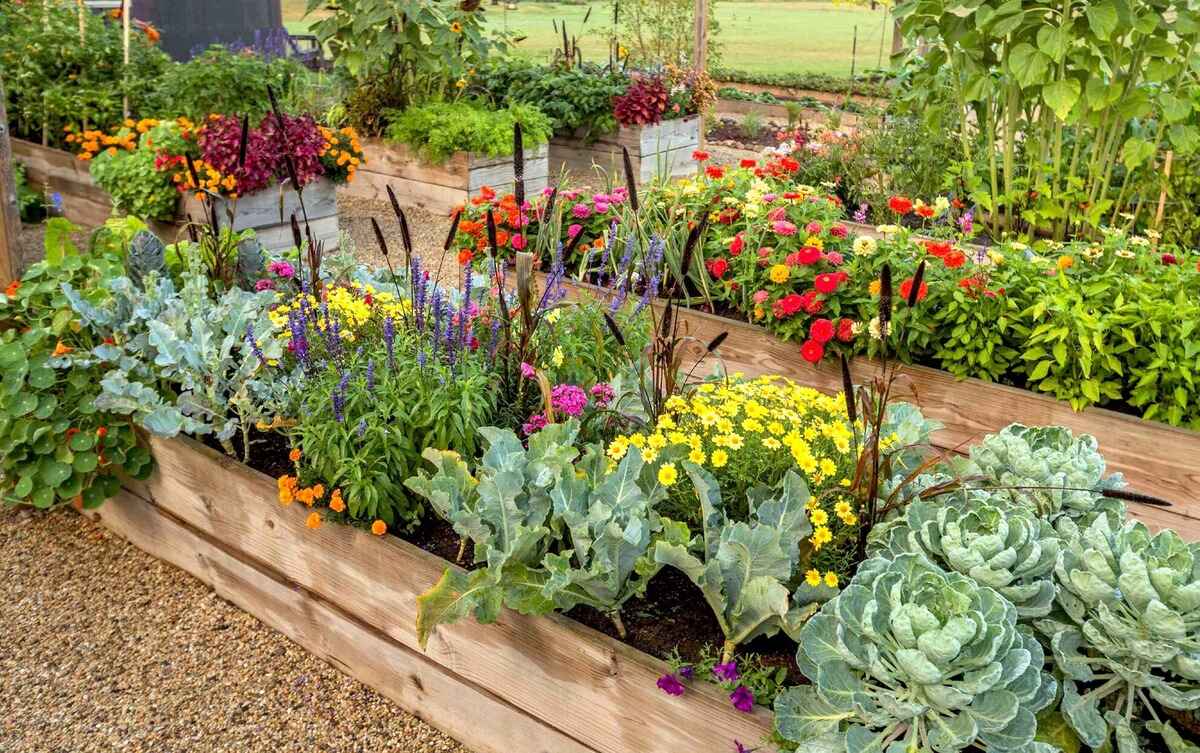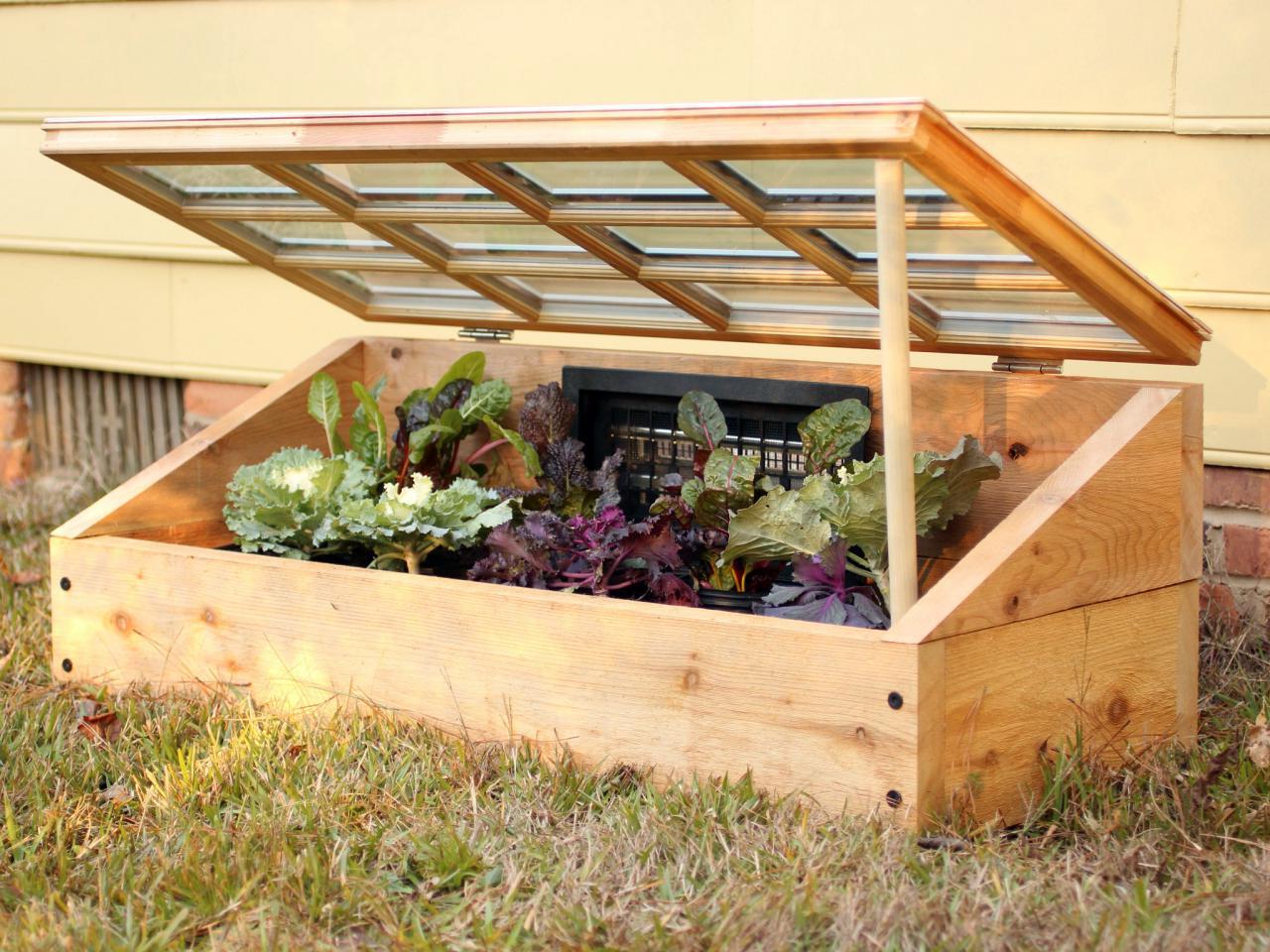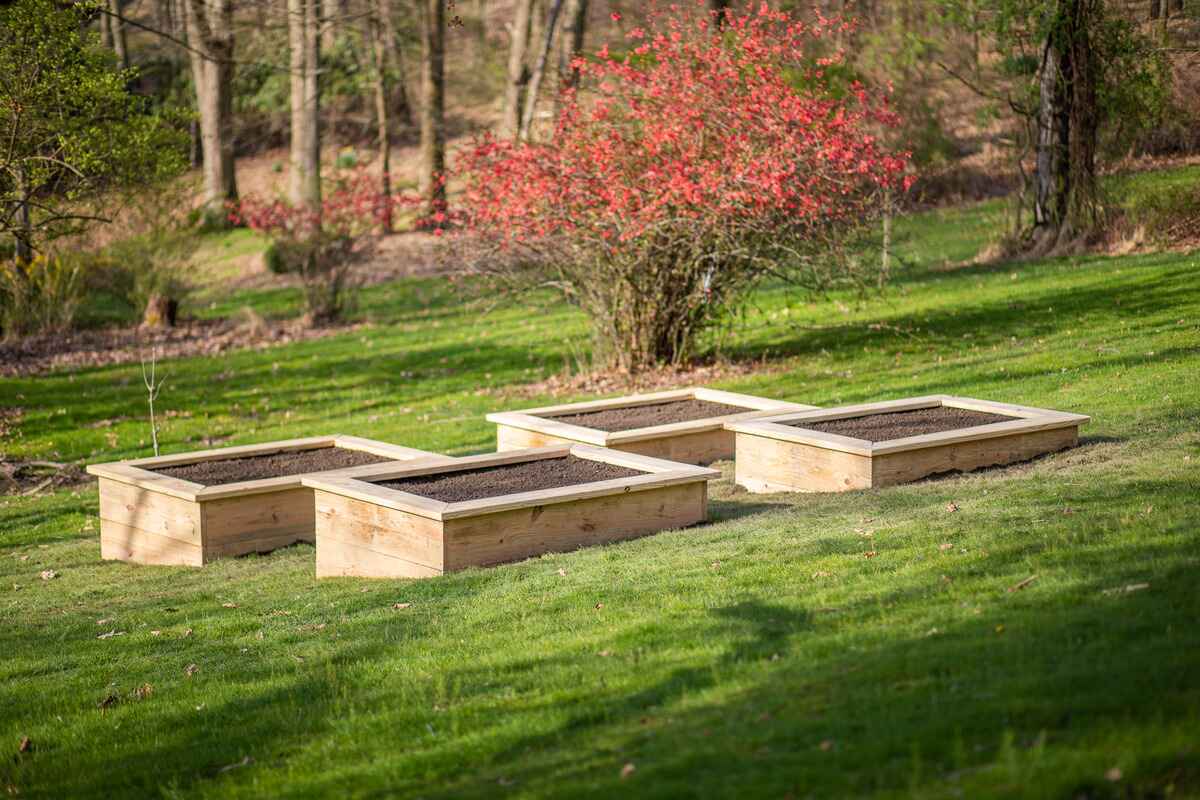Home>Outdoors & Camping>Landscaping>How To Start A Garden
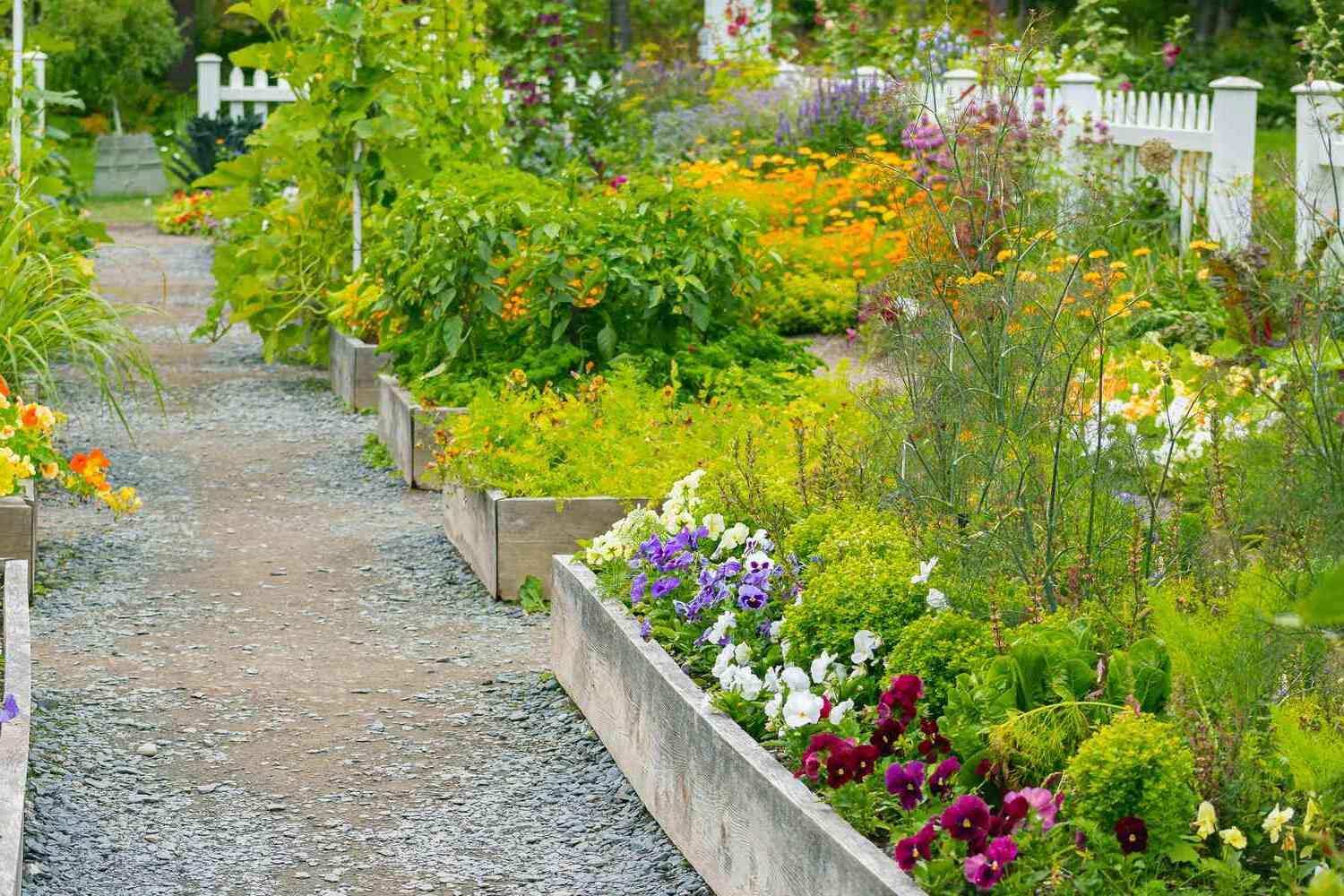

Landscaping
How To Start A Garden
Published: March 7, 2024

Content Creator for Outdoors & Camping, Sophie turns any yard into a sustainable paradise. Her dedication to DIY outdoor projects and volunteer work in community gardens shares joy and knowledge.
Learn the essential steps for starting a garden and creating a beautiful landscape. Get expert tips on landscaping and garden design to transform your outdoor space.
(Many of the links in this article redirect to a specific reviewed product. Your purchase of these products through affiliate links helps to generate commission for Twigandthistle.com, at no extra cost. Learn more)
Benefits of Starting a Garden
So, you're thinking about starting a garden, but you're not quite sure if it's worth the effort? Well, let me tell you, there are numerous benefits to starting your own garden that go beyond just having beautiful flowers or fresh vegetables. Here are some compelling reasons why you should roll up your sleeves and get your hands dirty in the garden:
-
Physical Health: Gardening is a fantastic way to get some exercise without feeling like you're actually working out. Digging, planting, weeding, and watering all require physical effort, which can help improve your strength, endurance, and flexibility.
-
Mental Well-being: Spending time in the garden has been shown to reduce stress and anxiety. The peacefulness of nature and the satisfaction of nurturing plants can have a calming effect on the mind.
-
Fresh, Nutritious Produce: Growing your own fruits and vegetables means you have access to fresh, organic produce right in your backyard. This not only saves you money but also ensures that you are consuming food that is free from harmful pesticides and chemicals.
-
Environmental Impact: By growing your own plants, you are contributing to a healthier environment. Plants absorb carbon dioxide and release oxygen, helping to purify the air. Additionally, gardening reduces the need for transporting produce from distant farms, which helps to lower carbon emissions.
-
Family Bonding: Gardening can be a wonderful activity for the whole family. It provides an opportunity for children to learn about nature, responsibility, and the satisfaction of seeing the fruits of their labor.
-
Aesthetic Appeal: Whether it's a colorful flower bed or a bountiful vegetable patch, a well-tended garden can enhance the visual appeal of your home and create a welcoming outdoor space for relaxation and entertainment.
-
Educational Experience: Starting a garden is a hands-on way to learn about the natural world. It offers the chance to understand the life cycle of plants, the importance of pollinators, and the impact of weather and seasons on the growth of your garden.
So, as you can see, the benefits of starting a garden are plentiful and diverse. Whether you're looking to improve your physical health, enjoy fresh produce, or simply create a beautiful outdoor space, gardening has something to offer for everyone. So, what are you waiting for? Grab your gardening gloves and get started on your green oasis today!
Read more: How To Build A Pond
Choosing the Right Location for Your Garden
When it comes to starting a garden, one of the most crucial decisions you'll make is choosing the right location. The success of your garden largely depends on its placement, so it's essential to consider several factors before breaking ground. Here's how to select the perfect spot for your garden:
-
Sunlight: Most plants require ample sunlight to thrive, so it's important to choose a location that receives at least 6-8 hours of direct sunlight per day. Observe your yard throughout the day to identify areas with the best sun exposure. Keep in mind that the sun's position changes with the seasons, so consider how sunlight patterns may shift throughout the year.
-
Soil Quality: The type of soil in your chosen location is another critical factor. Different plants have varying soil preferences, so it's essential to assess the soil's texture, drainage, and fertility. Conduct a soil test to determine its pH level and nutrient content, which will help you select plants that are well-suited to the soil conditions.
-
Accessibility to Water: Access to water is vital for the health of your garden. Choose a location that is within reach of a water source, whether it's a hose, irrigation system, or rainwater collection barrel. Additionally, consider the drainage of the area to ensure that excess water can flow away from the garden to prevent waterlogging.
-
Protection from Elements: Evaluate the potential garden locations for protection from strong winds, frost, and other extreme weather conditions. While some plants may benefit from a gentle breeze, others may require shelter from harsh winds. Additionally, consider the impact of nearby structures or trees that may cast shade or provide protection.
-
Space and Accessibility: Consider the size and accessibility of the location. Ensure that the chosen spot provides enough space for the plants to grow without overcrowding. Accessibility is also important for maintenance tasks such as watering, weeding, and harvesting. A location that is easily accessible will make it more convenient for you to care for your garden.
-
Aesthetic Considerations: While not essential for plant growth, the visual appeal of your garden location is worth considering. A well-placed garden can enhance the overall aesthetics of your outdoor space. Consider how the garden will complement the existing landscape and how it will be viewed from different vantage points.
By carefully considering these factors, you can select a location that provides the optimal conditions for your garden to flourish. Remember that the right location can make a significant difference in the success and enjoyment of your gardening endeavors.
Selecting the Best Plants for Your Garden
Choosing the best plants for your garden is a crucial step in creating a thriving and visually appealing outdoor space. The selection process involves considering factors such as climate, soil conditions, and personal preferences. Here's a detailed guide to help you make informed decisions when it comes to selecting the right plants for your garden:
-
Climate Compatibility: Before choosing plants, it's essential to understand the climate of your region. Different plants thrive in specific climate zones, so it's important to select varieties that are well-suited to your local conditions. Consider factors such as temperature range, average rainfall, and frost dates to determine which plants will thrive in your area.
-
Soil Preferences: Soil type and quality play a significant role in plant growth. Some plants prefer well-draining sandy soil, while others thrive in moisture-retentive clay soil. Conduct a soil test to assess the pH level and nutrient content of your soil, and then choose plants that are compatible with these conditions. Additionally, consider the soil's fertility and organic matter content when selecting plants.
-
Sunlight Requirements: Different plants have varying sunlight requirements, ranging from full sun to full shade. Assess the sunlight patterns in your garden to determine which areas receive direct sunlight, partial shade, or full shade. This information will help you select plants that are suitable for the available light conditions.
-
Water Needs: Consider the water requirements of the plants you intend to grow. Some plants are drought-tolerant and require minimal watering, while others thrive in consistently moist soil. Match the water needs of the plants with the natural water availability in your garden to ensure optimal growth and health.
-
Mature Size and Growth Habit: When selecting plants, consider their mature size and growth habit. Ensure that the plants you choose have adequate space to grow without overcrowding or overshadowing other plants. Additionally, consider the growth habit of the plants, such as spreading, upright, or trailing, to plan their placement effectively.
-
Seasonal Interest: Create a garden that offers visual interest throughout the year by selecting plants with varying bloom times, foliage colors, and seasonal characteristics. Incorporate a mix of plants that provide spring blooms, summer foliage, fall colors, and winter interest to create a dynamic and ever-changing garden landscape.
-
Pest and Disease Resistance: Choose plants that are known for their resistance to common garden pests and diseases. Research the susceptibility of different plant varieties to ensure that you select resilient and low-maintenance options for your garden.
-
Personal Preferences: Consider your personal preferences and gardening goals when selecting plants. Whether you prefer vibrant flowers, fragrant herbs, or productive vegetable plants, align your choices with the overall vision you have for your garden.
By carefully considering these factors, you can select a diverse range of plants that are well-suited to your garden's unique conditions. Remember to plan for a mix of colors, textures, and heights to create a visually appealing and harmonious garden landscape.
Preparing the Soil for Planting
Preparing the soil for planting is a critical step that sets the stage for the success of your garden. Healthy, nutrient-rich soil provides the foundation for strong plant growth and bountiful harvests. Here's a detailed guide on how to prepare your soil for planting:
-
Clear the Area: Begin by clearing the selected planting area of any debris, rocks, or weeds. Remove any existing vegetation and ensure that the soil surface is clean and free from obstructions.
-
Soil Testing: Conduct a soil test to assess the pH level and nutrient content of the soil. Soil testing kits are readily available and provide valuable insights into the soil's composition. Based on the test results, you can make informed decisions about the amendments needed to optimize the soil for plant growth.
-
Amend the Soil: Based on the soil test results, amend the soil as necessary to improve its fertility and structure. Common soil amendments include organic matter such as compost, well-rotted manure, and peat moss. These amendments enhance the soil's texture, improve drainage, and provide essential nutrients for plant growth.
-
Till the Soil: Use a garden tiller or a hand tool to till the soil to a depth of 8-12 inches. Tilling helps to loosen compacted soil, improve aeration, and incorporate organic amendments evenly throughout the planting area. Avoid tilling when the soil is excessively wet, as it can lead to compaction.
-
Mulch Application: Consider applying a layer of organic mulch, such as straw, wood chips, or shredded leaves, to the soil surface. Mulch helps to conserve soil moisture, suppress weed growth, and regulate soil temperature. Additionally, as the mulch breaks down, it contributes organic matter to the soil, further enriching its fertility.
-
Raised Beds: If you're creating a garden with raised beds, construct the beds and fill them with a well-balanced mix of topsoil, compost, and other organic amendments. Raised beds provide excellent drainage and are particularly beneficial for areas with heavy or poorly draining soil.
-
Soil Protection: Prior to planting, take measures to protect the soil from erosion and compaction. Consider installing garden pathways or using stepping stones to minimize soil disturbance. Additionally, avoid walking on the planting area when the soil is wet to prevent soil compaction.
By following these soil preparation steps, you can create an optimal growing environment for your plants. Well-prepared soil sets the stage for healthy root development, robust plant growth, and ultimately, a flourishing garden.
Planting and Caring for Your Garden
Once you have selected the perfect location, chosen the right plants, and prepared the soil, it's time to get your hands dirty and start planting. Here's a detailed guide on how to plant and care for your garden to ensure the best possible growing conditions for your plants:
-
Planting Techniques: When planting your garden, follow the recommended spacing and planting depth for each type of plant. Dig individual holes for each plant, ensuring that they are slightly wider and deeper than the root ball. Gently remove the plant from its container, loosen the roots, and place it in the hole. Backfill with soil, gently firming it around the base of the plant. Water the newly planted seedlings thoroughly to help them settle into their new home.
-
Watering: Proper watering is essential for the health of your garden. Water newly planted seeds and seedlings gently and consistently to keep the soil evenly moist. As the plants establish themselves, adjust your watering schedule based on the specific water needs of each plant. Water deeply and less frequently to encourage deep root growth and drought tolerance. Consider using a soaker hose or drip irrigation system to deliver water directly to the root zone and minimize water loss through evaporation.
-
Mulching: Apply a layer of organic mulch around your plants to conserve soil moisture, suppress weed growth, and regulate soil temperature. Mulch also helps to prevent soil erosion and compaction. Use materials such as straw, wood chips, or shredded leaves, and maintain a layer of 2-3 inches around your plants, keeping the mulch several inches away from the plant stems to prevent moisture-related issues.
-
Fertilizing: Monitor the growth and health of your plants to determine if they require additional nutrients. Consider using organic fertilizers to provide a slow-release, balanced source of nutrients for your garden. Apply fertilizers according to the specific needs of each plant type, and avoid over-fertilizing, which can lead to excessive foliage growth at the expense of flower or fruit production.
-
Weeding: Regularly inspect your garden for weeds and promptly remove them to prevent competition for nutrients, water, and sunlight. Consider using mulch to suppress weed growth, and use hand tools or a hoe to remove weeds that do emerge. By staying on top of weed control, you can maintain a tidy and healthy garden environment.
-
Pruning and Deadheading: As your garden plants grow, monitor their growth habits and prune as needed to maintain shape, encourage branching, and remove dead or diseased growth. Deadhead spent flowers to promote continuous blooming and prevent the plants from expending energy on seed production. Proper pruning and deadheading can help your garden plants stay healthy and vibrant throughout the growing season.
-
Pest and Disease Management: Keep a close eye on your garden for signs of pests and diseases, and take proactive measures to manage any issues that arise. Consider using natural pest control methods, such as beneficial insects, companion planting, and organic pest repellents. Regularly inspect your plants for signs of disease, and promptly address any issues to prevent them from spreading.
-
Support and Staking: Some garden plants, such as tomatoes, cucumbers, and tall flowers, may require support or staking to prevent them from bending or breaking under their own weight. Install stakes, trellises, or cages to provide structural support for these plants, ensuring that they can grow upright and receive adequate airflow and sunlight.
By following these planting and care guidelines, you can nurture a healthy and thriving garden that rewards you with beautiful blooms, delicious harvests, and a vibrant outdoor space to enjoy throughout the growing season. Remember to observe your garden regularly, adjust your care practices as needed, and take pride in the fruits of your labor.
Read more: How To Make A Flower Bed
Dealing with Common Garden Pests and Diseases
Dealing with common garden pests and diseases is a crucial aspect of maintaining a healthy and thriving garden. Pests and diseases can wreak havoc on your plants, causing damage, stunted growth, and reduced yields if left unchecked. Here's a comprehensive guide on how to identify, prevent, and manage common garden pests and diseases to protect your garden:
Pest Identification
- Regularly inspect your plants for signs of pest infestation, including chewed leaves, holes, discolored patches, and visible insects.
- Common garden pests include aphids, caterpillars, snails, slugs, spider mites, and beetles, among others.
- Use resources such as gardening books, online guides, and local agricultural extension services to identify specific pests and their damage patterns.
Natural Pest Control Methods
- Encourage natural predators such as ladybugs, lacewings, and predatory insects that feed on garden pests.
- Introduce beneficial nematodes, microscopic organisms that target and control soil-dwelling pests such as grubs and caterpillars.
- Companion planting involves growing pest-repelling plants alongside susceptible crops to deter pests and attract beneficial insects.
Organic Pest Repellents
- Use natural pest repellents such as neem oil, insecticidal soap, and horticultural oils to control common garden pests.
- Create homemade repellents using ingredients like garlic, chili peppers, and essential oils to deter pests from feeding on your plants.
Read more: How To Make A Compost Pile
Disease Prevention
- Practice good garden hygiene by removing and disposing of diseased plant material to prevent the spread of diseases.
- Water your garden in the morning to allow foliage to dry during the day, reducing the risk of fungal diseases caused by prolonged moisture on leaves.
- Provide adequate spacing between plants to promote air circulation and reduce the likelihood of disease spread.
Disease Management
- If disease symptoms appear, promptly identify the issue and research appropriate treatment methods for specific diseases.
- Use organic fungicides and disease control products to manage common garden diseases such as powdery mildew, blight, and rust.
- Consider implementing crop rotation to prevent the buildup of soil-borne diseases in the garden.
Integrated Pest Management (IPM)
- Implement an integrated pest management approach that combines cultural, biological, and physical control methods with the careful use of targeted pesticides when necessary.
- Monitor pest populations and plant health regularly to make informed decisions about pest control measures.
Vigilance and Early Intervention
- Regularly monitor your garden for signs of pest and disease activity, and take swift action at the first indication of a problem.
- Address pest and disease issues promptly to prevent them from spreading and causing extensive damage to your plants.
By implementing proactive pest and disease management strategies, you can safeguard your garden against common threats and maintain a healthy, thriving growing environment for your plants. Remember that a combination of preventive measures, natural controls, and targeted interventions can help you effectively manage pests and diseases while minimizing the use of chemical treatments.
Read more: How To Build A Steam Room
Harvesting and Enjoying the Fruits of Your Labor
As the culmination of your gardening efforts, the process of harvesting and enjoying the fruits of your labor is a gratifying and rewarding experience. Whether you've cultivated a bountiful vegetable garden, a vibrant flower bed, or a combination of both, the act of harvesting and savoring the results of your hard work is a joyous occasion. Here's a detailed guide on how to effectively harvest and relish the yields of your garden:
Timing of Harvest
Timing is crucial when it comes to harvesting the produce from your garden. Different fruits, vegetables, and flowers have specific indicators that signal they are ready for harvest. For example, ripe tomatoes will exhibit vibrant color and yield slightly to gentle pressure, while mature zucchinis should be firm and of moderate size. Consult gardening resources and plant-specific guidelines to determine the optimal timing for harvesting each type of plant in your garden.
Harvesting Techniques
Employ proper harvesting techniques to ensure the quality and longevity of your garden's yields. Use clean, sharp garden shears or pruners to carefully cut fruits and vegetables from the plant, minimizing damage to the surrounding foliage. For delicate flowers, use a sharp knife or scissors to make clean cuts at an angle, ensuring the stems are long enough for arranging in vases or floral displays. Handle harvested produce with care to prevent bruising or damage that can reduce shelf life and quality.
Post-Harvest Handling
After harvesting, handle your garden's bounty with care to maintain its freshness and flavor. Store fruits and vegetables in a cool, dry place with adequate ventilation to prolong their shelf life. Consider using breathable storage containers, such as mesh bags or perforated plastic bins, to maintain optimal humidity levels and prevent moisture buildup. For cut flowers, immediately place the stems in a bucket of water and store them in a cool location until you're ready to arrange them in vases or floral displays.
Read more: How To Build A Putting Green In Backyard
Enjoying the Fruits of Your Labor
The ultimate reward of gardening is the enjoyment of the harvest. Whether you're savoring the flavor of freshly picked tomatoes, creating vibrant floral arrangements for your home, or sharing your garden's abundance with friends and family, take the time to relish the fruits of your labor. Prepare delicious meals using your homegrown produce, create stunning floral centerpieces, or simply bask in the beauty and fragrance of your garden's blooms. Embrace the satisfaction of knowing that your dedication and care have resulted in a tangible and delightful outcome.
Reflection and Planning
As you enjoy the fruits of your labor, take the opportunity to reflect on the successes and lessons learned from your gardening experience. Consider what worked well and what could be improved in the next growing season. Use your observations to inform future garden planning, such as selecting new plant varieties, adjusting planting schedules, or implementing enhanced care practices. Embrace the continuous learning and evolution of your gardening journey as you relish the rewards of your current harvest.
Sharing and Community
Share the abundance of your garden with others in your community. Consider donating excess produce to local food banks, sharing bouquets of flowers with neighbors, or exchanging gardening tips and experiences with fellow enthusiasts. Engaging with your community fosters a sense of connection and camaraderie, allowing others to appreciate the fruits of your labor while spreading the joy of gardening to a wider audience.
By following these guidelines, you can effectively harvest and enjoy the fruits of your labor, celebrating the culmination of your gardening efforts and embracing the tangible rewards of your dedication and care. Whether it's a flavorful harvest of homegrown vegetables, a vibrant display of freshly cut flowers, or the joy of sharing your garden's abundance with others, the act of harvesting and relishing the results of your garden is a fulfilling and enriching experience.

